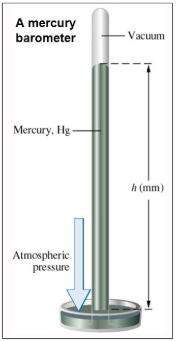
Chemistry, 26.05.2020 18:02 brockmerino
. Consider the following 3 systems: a. A binary mixture with vapor-liquid equilibrium, both components are generally present in both phases. b. The reaction between nitrogen and hydrogen to form ammonia occurs in the gas phase. c. The reaction between steam and methane to form hydrogen gas occurs in the gas phase. Carbon monoxide and carbon dioxide are also produced. d. How many degrees of freedom (ℱ) are there for each system? If ℱ > 0 then which intensive variables would you fix? What would you conclude if ℱ = 0 or ℱ < 0 ?

Answers: 3


Another question on Chemistry

Chemistry, 23.06.2019 15:00
The atoms in a have a definite volume, but move quickly enough to overcome the forces of attraction between them. a. solid b.liquid c.gas
Answers: 2

Chemistry, 23.06.2019 19:00
Question 1 how do an ionic bond and a covalent bond differ? an ionic bond is an attraction between oppositely charged ions. a covalent bond is a sharing of electrons between atoms. a covalent bond is an attraction between oppositely charged ions. an ionic bond is a sharing of electrons between atoms. there is no difference. both an ionic bond and a covalent bond share electrons. there is no difference. both an ionic bond and a covalent bond are attractions between oppositely charged ions. question 2 what is the definition of a covalent bond? a bond between two positive ions a bond between two negative ions a bond between a positive and a negative ion a bond between two atoms question 3 what is a bond called that shares electrons between two neutral atoms? covalent bond ionic bond metallic bond polar bond question 4 water (h2o) is composed of the same elements as carbon monoxide (co). how do their properties compare? they have different properties because the arrangement of atoms is different. they have the same properties because they have the same atoms. they have different properties because they have different atoms. they have the same properties because they have the same arrangement of atoms. question 5 what is the definition of a chemical bond? a mutual attraction between the nuclei and electrons in two different atoms a mutual attraction between the nuclei and electrons in a single atom a mutual repulsion between the nuclei and electrons in two different atoms a mutual repulsion between the nuclei and electrons in a single atom
Answers: 1

Chemistry, 23.06.2019 23:30
How is a constant volume calorimeter made and how it’s used to measure energy transfer
Answers: 2

Chemistry, 24.06.2019 01:00
Consider the chemical equilibrium of the reaction. agcl(s) ag+(aq) + cl–(aq) what will happen to the chemical equilibrium if agno3 is added? a there is no shift in the chemical equilibrium of the system. b the chemical equilibrium of the system shifts to the right. c the chemical equilibrium of the system shifts to the left. d the chemical equilibrium of the system is destroyed.
Answers: 1
You know the right answer?
. Consider the following 3 systems: a. A binary mixture with vapor-liquid equilibrium, both componen...
Questions

Mathematics, 21.01.2021 05:50


History, 21.01.2021 05:50

English, 21.01.2021 05:50

Biology, 21.01.2021 05:50

Mathematics, 21.01.2021 05:50




Geography, 21.01.2021 05:50

History, 21.01.2021 05:50




Mathematics, 21.01.2021 05:50


Mathematics, 21.01.2021 05:50



Mathematics, 21.01.2021 05:50




